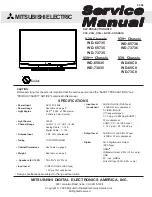
8 | DE
OBO Bettermann
System description
5 System description
5 1
Basic principles
Without any additional countermeasures, the high voltage pulses which
occur when there is a direct lightning strike will cause arcing on insu-
lation surfaces. This effect is termed a creep flashover. When the so-
called creep discharge inception voltage has been exceeded, surface
discharge is initiated, which can bridge a gap of several metres. To avoid
dangerous arcing between conductive parts (electrical systems, pipe-
lines, etc.), the maintenance of the separation distance is a key require-
ment when planning and implementing a lightning protection system.
These days, the roof level of building complexes is used as an installa-
tion area for air-conditioning, ventilation, transmission and energy collec-
tion systems, meaning that the structural features may be in the way of
the required spacing between the air-termination systems and the elec-
trical installations.
The isCon
®
insulated lightning protection system is used to maintain the
required separation distance. Depending on the design, after the first
potential connection behind the connection element on the air-termina-
tion rod, the isCon
®
conductor reflects an equivalent separation distance
of up to 0.45‒0.9 metres in the air or double that in solid matter. This
means that installation is possible directly on metallic and electric-
al structures. If there is a direct lightning strike, the incoming energy is
arrested through the isCon
®
conductor to the building's earthing system.
There is no direct arcing between the conductor and the building to be
protected.
The isCon
®
system is tested according to VDE V 0185-561-8 (IEC TS
62561-8) and has an arresting capacity of 150‒200 kA lightning surge
current (10/350 μs), depending on the conductor. It consists primarily of
the following components:
– isCon
®
conductor
– Insulated air-termination rods
– isCon
®
connection elements
– System accessories for fastening (tripod stand, support and holder)
– System accessories for connection









































